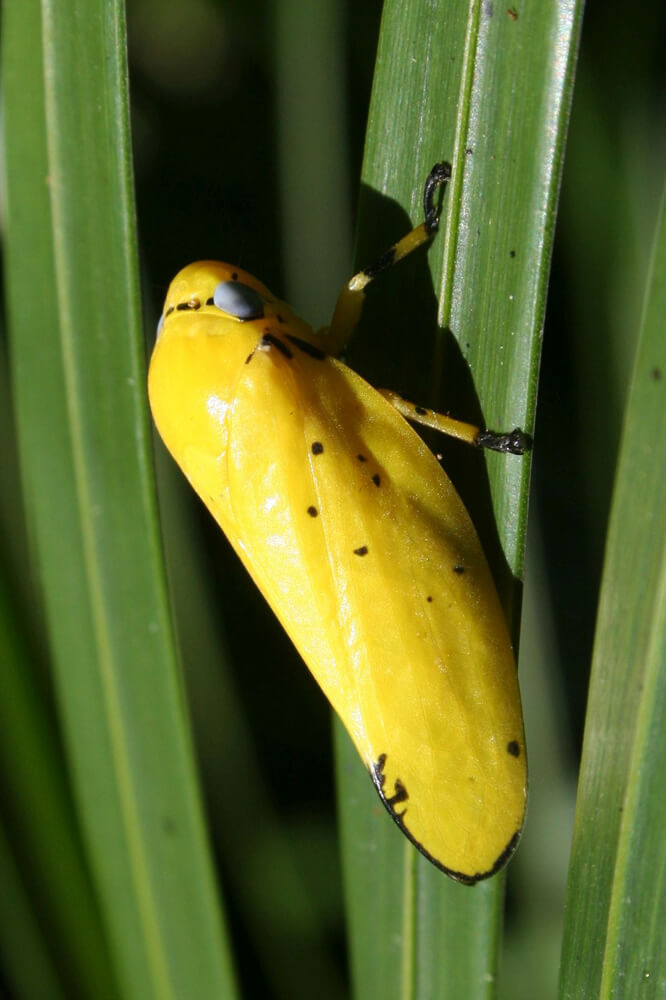Have you ever sat under a tree, when the sun was shining, and the sky was blue, and wondered why it was raining? Chances are you happened to pick a spot just beneath a family of raintree spittlebugs.
Raintree bugs belong to the family Cercopidae. Like all true bugs they feed through a drinking straw, called a ‘rostrum’ or ‘stylus’, which can be seen clearly between the legs in this adult (greenish with a black tip).

Ptyelus grossus

Ptyelus flavescens
Plant sap is not all too nutritious, so the bugs have to work through a lot of it to get sufficient proteins. The rest gets dumped.
Young nymphs blow bubbles with their excretions, and so they live and feed in a glorious soggy huddle. The dripping foam keeps them moist and cool and keeps predators and parasites away.

As the nymphs grow larger they blow fewer bubbles but still wallow in their wee, dripping more than ever.

Raintree bugs tend to sit out of reach high up in trees. Typical trees favoured by these insects include Peltophorum and Lonchocarpus capassa, but also Tipuana, Grevillea, Acacia, Rhus, Strychonos and even Eucalyptus, according to the Field Guide to Insects of South Africa (Picker et al.)
Our neighbour recently cut down such a ‘rain-tree’ so I got access to the highest branches. The nymphs were nearly fully grown, and there were some empty skins and adults about too. (So, chances are they all survived, despite their home being destroyed.)

Beautifully marbled raintree bug nymphs, ready to mould into adults.

The empty larval skin after the adult has emerged.

Fully grown nymph with fly maggot hitchhikers.
Interestingly, each beautifully marbled nymph was carrying around a bunch of freeloaders. They appeared to be maggots of some sort – fly larvae wallowing together with the young bugs and presumably feeding on the depleted, but not entirely worthless, processed plant sap.
Raintree bugs’ close relatives – other spittlebugs – may be found in the understory and often on grass.

Red-spotted spittlebug.
Look out for blobs of foam. Gently brush the foam away to uncover the little foam-machine.

How do they create the foam? Apparently, the body plates (‘tergites’) that run down the sides of their abdomen, instead of just forming the sides of a box, meet below the body, to create a cavity. The air holes (‘spiracles’) open into this cavity. The chamber is closed off at the front, but open to the rear. By telescoping their abdomen in and out, they suck air into the compartment, expelling it through a film of anal secretions – like a child blowing bubbles through a wire hoop – thus creating that glorious bubblebath.



About the author
Marlies Craig is an epidemiologist working in medical research. Though she originally studied Biology and Entomology, her love affair with insects is personal. In her newly published book, What Insect Are You? – Entomology for Everyone, she shares that passion with young and old. She hopes to kindle in children a deeper appreciation and understanding of nature, and show them why and how they can make a difference within their sphere of influence. Find Marlies’s website at What Insect Are You?